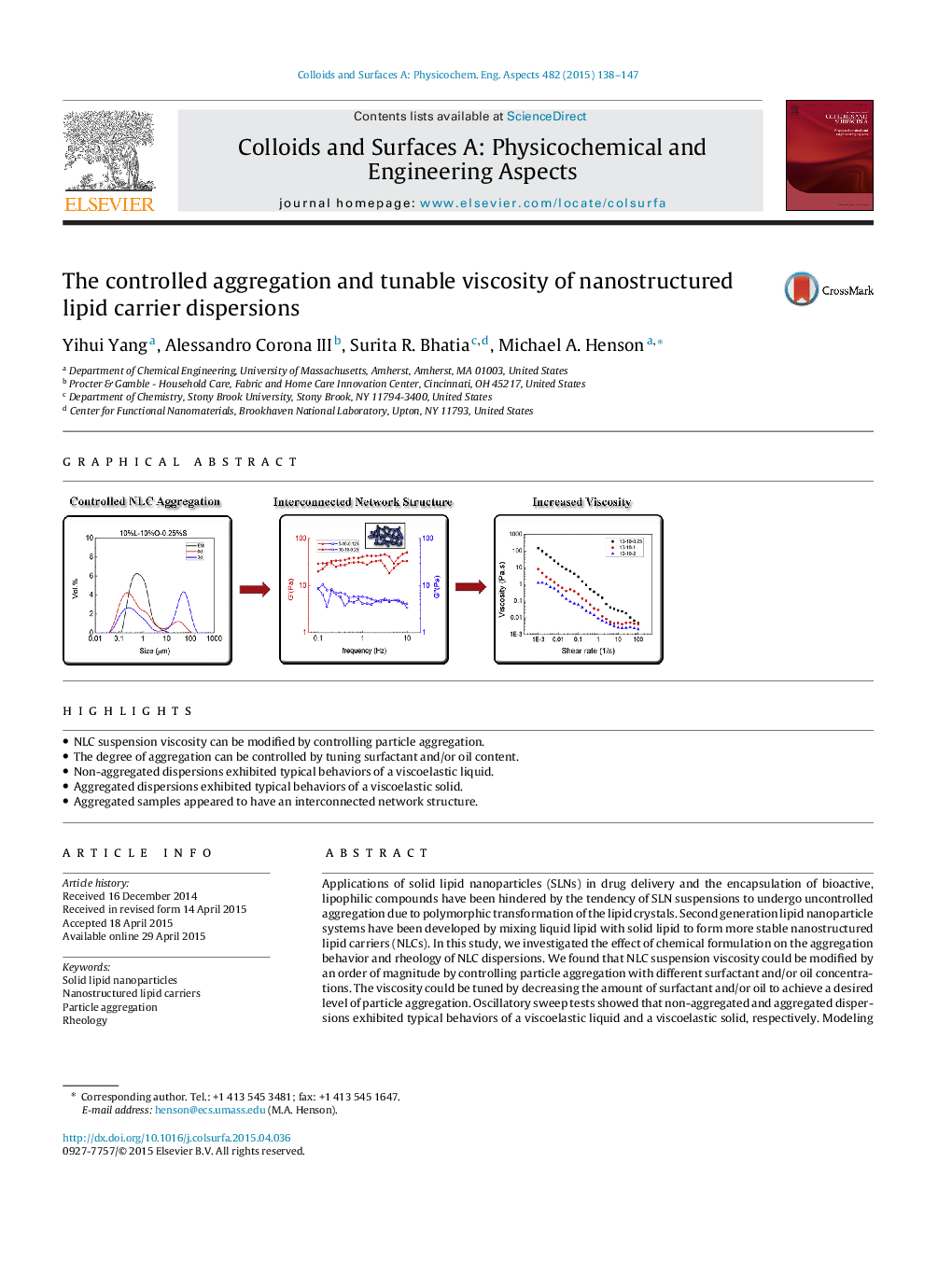| کد مقاله | کد نشریه | سال انتشار | مقاله انگلیسی | نسخه تمام متن |
|---|---|---|---|---|
| 592053 | 1453891 | 2015 | 10 صفحه PDF | دانلود رایگان |
• NLC suspension viscosity can be modified by controlling particle aggregation.
• The degree of aggregation can be controlled by tuning surfactant and/or oil content.
• Non-aggregated dispersions exhibited typical behaviors of a viscoelastic liquid.
• Aggregated dispersions exhibited typical behaviors of a viscoelastic solid.
• Aggregated samples appeared to have an interconnected network structure.
Applications of solid lipid nanoparticles (SLNs) in drug delivery and the encapsulation of bioactive, lipophilic compounds have been hindered by the tendency of SLN suspensions to undergo uncontrolled aggregation due to polymorphic transformation of the lipid crystals. Second generation lipid nanoparticle systems have been developed by mixing liquid lipid with solid lipid to form more stable nanostructured lipid carriers (NLCs). In this study, we investigated the effect of chemical formulation on the aggregation behavior and rheology of NLC dispersions. We found that NLC suspension viscosity could be modified by an order of magnitude by controlling particle aggregation with different surfactant and/or oil concentrations. The viscosity could be tuned by decreasing the amount of surfactant and/or oil to achieve a desired level of particle aggregation. Oscillatory sweep tests showed that non-aggregated and aggregated dispersions exhibited typical behaviors of a viscoelastic liquid and a viscoelastic solid, respectively. Modeling results suggested a stronger particle–particle bonding force and a higher aggregation efficiency as the amount of surfactant and/or oil was decreased. Both experimental and modeling results indicated that aggregated samples had an interconnected network structure, while no indication of network formation was observed for non-aggregated samples. Collectively these results suggest that controlled NLC aggregation can be exploited to develop dispersions with tunable viscosity for applications such as rheology modification.
Figure optionsDownload as PowerPoint slide
Journal: Colloids and Surfaces A: Physicochemical and Engineering Aspects - Volume 482, 5 October 2015, Pages 138–147
